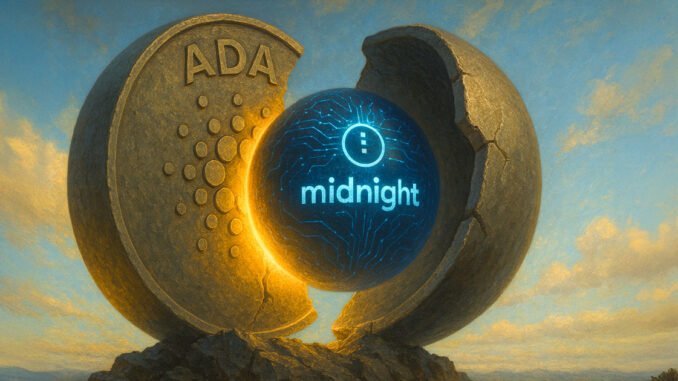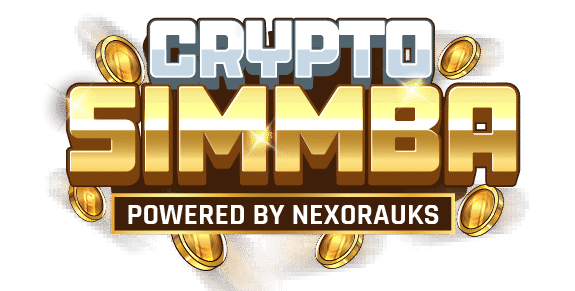
The following is a guest post and analysis from Shane Neagle, Editor In Chief fromThe Tokenist.
On June 23rd, Midnight Foundation released its first tokenomics paper. Earlier in June, Charles Hoskinson, the co-founder of Ethereum (ETH) and founder of Cardano (ADA), pegged Midnight as “the single biggest event in the history of Cardano,” with a caveat: “if it is successful.”
Although the altcoin season had a pullback this week, and the crypto market is more diluted than ever with tens of thousands of tokens, it is worth investigating new projects. After all, the exit of the Biden administration represents the departure of a hostile force that used many underhanded tactics to debank crypto projects.
In that light, what is the merit behind Midnight?
Cardano’s Need for Midnight
It is no secret that the Cardano blockchain is generally perceived as lagging behind other networks such as Ethereum or Solana. By total value locked (TVL), Cardano ranks 20th according to DefiLlama, with $360 million in capital across ~50 dApps. For comparison, Solana has a TVL of $10 billion across ~240 dApps, which is again 8x lower than Ethereum.
This lack of significant market share is largely attributed to Cardano’s robust academic approach to smart contract development and blockchain frameworks, ensuring that the network has all its ducks in a row to avoid reputation-disabling vulnerabilities down the line.
Charles Hoskinson also noted the lack of stablecoins as a contributing factor, having floated the idea of converting around $100 million worth of ADA tokens into USDM stablecoins, which are issued by the regulated Moneta Digital LLC service.
Moreover, if scaling of Cardano goes as planned, in addition to the inflow of stablecoins post-Genius and Clarity Acts, Hoskinson boldly forecasted that the altcoin market will see trillions of value—and that Cardano is expected to play a major role in it. But what is Midnight’s role?
Midnight’s Background and Pitch
Midnight is closely tied to Cardano’s IOHK (Input Output Hong Kong), later rebranded as Input Output Global (IOG). While the Swiss-based Cardano Foundation is in charge of developing the blockchain ecosystem, such as adoption and community-building, IOG is the software engineering organization behind Cardano’s core tech and roadmap.
As the current president of the Midnight Foundation launched in May, Fahmi Syed served within IOG to push the project, in addition to contributing to Polkadot and Kusama via Parity Technologies. Prior to Syed’s crypto involvement, he was the chief operating officer (COO) at UK-based Fifthdelta, which emerged as a startup from Citadel money managers in 2021.
Midnight Foundation pitches the network as a “fourth-generation blockchain built for secure, compliant, and private decentralised applications.” What does that mean exactly?
TradFi has been notoriously cautious to adopt blockchain because the default one is too transparent. Both Ethereum and Bitcoin have transactions publicly visible, which doesn’t lend itself to safeguarding customer data and financial privacy.Midnight aims to step into this gap by providing programmable privacy, utilizing zero-knowledge proof cryptography. This tech enables data/transaction verification without revealing identity, making it regulatory-compliant in the process.
Specifically, Midnight Network uses ZK-SNARKs (Zero-Knowledge Succinct Non-Interactive Arguments of Knowledge) with its own smart contract programming language, Compact. Although zero-knowledge proof is more computationally intensive off-chain, this tech reduces on-chain load without requiring a trusted setup (depending on the variant used).
Per transaction, this approach exerts higher fees due to higher computational costs, but ZK-rollups turn this around by bundling many transactions into a single cryptographic proof. Ultimately, this reduces on-chain load and transaction costs.
In short, the purpose of Midnight is to act as a bridge between private and public ledgers, eliminating the exposure of on-chain transactions. The key to furthering that goal is Midnight’s Zswap ledger, which facilitates atomic token swaps.
After all, atomicity is crucial for cross-chain transfers between multiple token types and privacy layers. Overall, this makes Midnight Network a promising project. It is worth remembering that the ideal scenario for the crypto market to thrive is to create a cohesive blockchain ecosystem in which users seamlessly transact between different parts.
Midnight’s Ecosystem Rollout
At press time, Midnight listed 52 dApps across infrastructure, DAO, DeFi, wallets, NFTs, prediction markets, gaming, AI, and other areas that benefit from programmable privacy. As with many other crypto projects, Midnight is unrolling two types of tokens:
NIGHT – native utility token for on-chain governance and ecosystem incentives, distributed to network participants securing the network. NIGHT is native to both Cardano and Midnight.DUST – unlike ETH, which pays for transactions across Ethereum dApps, NIGHT doesn’t serve that function. Instead, NIGHT tokens generate DUST, a renewable resource.As long as Midnight participants hold NIGHT tokens, they can use the generated DUST to execute free transactions, which is itself an incentive mechanism. DUST decays after generation (designating DUST address by NIGHT token holders), which prevents it from serving as a store of value.
The decision to go that route was driven by Midnight’s privacy focus, as DUST doesn’t leave a metadata trail like other single-token ecosystems. This also includes resistance to MEV manipulation.
In the Midnight tokenomics and incentives whitepaper released in June 2025, NIGHT token supply is limited to 24 billion, minted on Cardano and mirrored on the Midnight network.
This supply is hard-capped, which means greater demand for transactions will not expand it. Under the umbrella of Midnight Foundation, the subsidiary Midnight TGE is in charge of this tokenomics model, in addition to Treasury and Reserve.
Reserve serves to issue NIGHT tokens to the network’s block producers, marking them as uncirculated supply.
Ongoing Midnight Token Airdrop
Dubbed “Glacier Drop” for phase 1 rollout, the airdrop will run from July through August, delivering 50% (12 billion NIGHT tokens) to Cardano (ADA), 20% to Bitcoin (BTC), and 30% across Ethereum (ETH), Ripple (XRP), Solana (SOL), Avalanche (AVAX), BNB Chain (BNB), and Brave (BAT).
Every three months, 25% of NIGHT token supply is unlocked, with the total unlock reached after 360 days. Initially, NIGHT tokens are locked, becoming tradable gradually to avoid supply shocks. To encourage adoption, any crypto holders with a minimum of $100 across the aforementioned chains are eligible to claim NIGHT tokens.
After the Glacier Drop, two more claim phases will follow—Scavenger Mine and Lost-and-Found. Readers interested in this project should visit the official website and follow claim instructions via the NIGHT Claim portal.
The Bottom Line
Features such as atomic swaps, privacy, and cross-chain functionality have been pillars of the crypto space since the early days. Case in point: Komodo launched open-source AtomicDEX in mid-2019. However, Midnight Network appears to be a more comprehensive project by combining all three aspects.
More importantly, Midnight is tied to Cardano, which is still well-capitalized. Likewise, the legacy blockchain network is known to form relationships with various government entities and organizations. In early 2025, asset manager Grayscale filed to turn Grayscale Cardano Trust into a publicly traded spot ETF.
Without a hostile SEC with Gary Gensler gone, this makes for a more fertile ground for Cardano and its associated projects. In turn, both ADA and NIGHT enthusiasts should proceed with cautious optimism, aware of the risks, but not blind to the opportunity—especially when paired with insights from the highly-rated investment newsletters that help decode emerging trends.
Mentioned in this article



